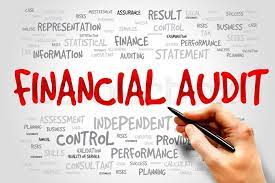Even inexperienced investors have most likely heard the word “IPO.” IPO is an abbreviation for “initial public offering” in the stock market. A privately-owned firm that completes an IPO sells shares of itself to the public for the first time. Those freshly issued shares are listed on a stock exchange, such as the New York Stock Exchange or the Nasdaq. Let’s see the definition of the initial public offering and understand the process and how it works in this article.
What Is an IPO (Initial Public Offering)?
An initial public offering (IPO) is the process of selling shares of a private firm to the general public in the form of new stock issuance. A firm can raise funds from public investors by issuing public shares. The transition from a private to a public firm can be a critical period for private investors to fully reap the benefits of their investment because it often involves share premiums for current private investors. Meanwhile, public investors are permitted to participate in the offering.
- An initial public offering (IPO) is the process of selling shares of a private firm to the general public in the form of new stock issuance. This new stock as well can call IPO stocks
- To undertake an initial public offering (IPO), companies must meet the standards of exchanges and the Securities and Exchange Commission (SEC) (IPO).
- IPOs give companies the option to raise funds by selling shares on the primary market.
- Companies use investment banks to sell their products, measure demand, and establish the IPO price and date, among other things.
- An IPO can be viewed as an exit plan for the company’s founders and early investors, allowing them to realize the full value of their private investment.
How Does The Initial Public Offering IPO Work?
A corporation is deemed private before an IPO. As a private corporation, the company has expanded with a small number of shareholders, including early investors such as the founders, family, and friends, as well as professional investors such as venture capitalists or angel investors.
When a firm believes it is mature enough for the rigors of SEC laws, as well as the rewards and responsibilities of public shareholders, it will begin to promote its interest in going public.
This stage of development is often reached when a firm has reached a private valuation of about $1 billion, sometimes known as unicorn status. However, depending on market competition and their capacity to meet listing standards, private companies at varied valuations with good fundamentals and proven profitability potential can potentially qualify for an IPO.
An IPO is a significant milestone for a company since it allows it to raise a large sum of money. This increases the company’s capacity to grow and expand. The enhanced openness and share listing credibility may also aid in obtaining better terms when seeking borrowed capital.
Underwriting due diligence is used to price a company’s IPO shares. When a corporation goes public, previously owned private share ownership transforms to public ownership, and the shares of current private shareholders become worth the public selling price.
Special provisions for private to public share ownership can also be included in share underwriting. In general, the transition from private to public is a critical period for private investors to cash out and receive the expected profits. Private shareholders can keep their shares in the public market or sell a portion or all of them for a profit.
The Evolution of Initial Public Offerings (IPOs)
For decades, the term initial public offering (IPO) has been a buzzword on Wall Street and among investors. The Dutch are credited with the first modern IPO by selling shares of the Dutch East India Company to the general public. Since then, initial public offerings (IPOs) have been utilized by corporations to raise funds from public investors through the issuing of public share ownership.
IPOs have been recognized for uptrends and downtrends in issuance over the years. Individual industries also have uptrends and downtrends in issuance as a result of innovation and other economic considerations. At the height of the dot-com boom, entrepreneurs with no revenue rushed to list themselves on the stock exchange.
The 2008 financial crisis resulted in the year with the fewest IPOs. Following the 2008 financial crisis, IPOs came to a halt, and fresh listings were scarce for several years. Recently, most of the IPO hype has shifted to a focus on so-called unicorns or startup companies with private valuations of more than $1 billion. Investors and the media are heavily speculating on these companies’ decision to go public through an IPO or remain private.
The Process of an Initial Public Offering (IPO) and Underwriters
An initial public offering (IPO) process is divided into two sections. The first is the offering’s pre-marketing phase, and the second is the initial public offering itself. When a firm decides to go public, it will either advertise to underwriters by asking for private bids or make a public declaration to create interest.
The underwriters are picked by the company to lead the initial public offering process. A business may select one or more underwriters to manage various aspects of the initial public offering process cooperatively. Underwriters participate in all aspects of the IPO, including due diligence, document preparation, filing, marketing, and issuance.
Steps to Process an IPO
The following are the steps to process an IPO (Initial Public Offering):
#1. Underwriters submit proposals and valuations that outline their services, the best form of security to issue, the offering price, the number of shares to be issued, and the projected time period for the market offering.
#2. An underwriting agreement is used by the corporation to select its underwriters and legally agree on underwriting terms.
#3. Underwriters, lawyers, certified public accountants (CPAs), and Securities and Exchange Commission (SEC) experts comprise IPO teams.
#4. The company’s information is prepared for the appropriate IPO papers.
- The principal IPO filing document is the S-1 Registration Statement. It is divided into two sections: the prospectus and the privately held filing information. The S-1 offers preliminary information regarding the projected filing date. Throughout the pre-IPO process, it will be often changed. The prospectus that comes with the package is also updated regularly.
#5. Marketing materials are prepared for the new stock issuance’s pre-marketing.
- Underwriters and executives publicize the share issuance to predict demand and set the ultimate offering price. Throughout the marketing process of the initial public offering, underwriters can make changes to their financial analyses. This includes the ability to change the IPO price or issuance date as they deem proper.
- Companies take the necessary efforts to meet specified requirements for public share offerings. Firms must follow both the standards for exchange listing and the SEC rules for public companies.
#6. Create a board of directors.
#7. Every quarter, ensure systems for reporting auditable financial and accounting information are in place.
#8. On an IPO date, the company issues its shares.
#9. Some post-IPO provisions could be implemented.
The Benefits of an Initial Public Offering (IPO) in Corporate Finance
- The fundamental goal of an IPO is to raise funds for a company. It may have additional benefits.
- To obtain funds, the company gains access to investment from the entire investing public.
- Facilitates easier acquisition transactions (share conversions). It may also be easier to determine the value of an acquisition target if its shares are publicly traded.
- Increased openness, as a result of compulsory quarterly reporting, can normally assist a corporation to obtain more favorable credit borrowing conditions than if it were a private company.
- Because it has already gained access to the public markets through the IPO, a public firm can raise additional cash in the future through secondary offerings.
- Through liquid stock equity participation, public corporations can attract and retain superior management and skilled staff (e.g. ESOPs). During the IPO, many companies would award CEOs or other staff with stock options.
- IPOs can provide a company with a reduced cost of equity and debt funding.
- Increase the company’s exposure, prestige, and public image, which can benefit sales and profitability.
Disadvantages to an Initial Public Offering (IPO)
Companies may face several disadvantages from going public, prompting them to pursue alternate options. The following are some of the biggest drawbacks:
- An IPO is costly, and the costs of running a public company are ongoing and often unrelated to the other costs of conducting business.
- Financial, accounting, tax, and other business information must be disclosed by the company. During these disclosures, it may be required to publicly expose trade secrets and business techniques that could benefit competitors.
- Significant legal, accounting, and marketing expenses arise, with many of them continuing.
- Management must devote more time, effort, and attention to reporting.
- If the market does not accept the IPO pricing, there is a danger that the necessary cash will not be raised.
- There is a loss of control and increased agency issues as a result of new shareholders gaining voting rights and effectively controlling company decisions through the board of directors.
- Legal or regulatory difficulties, such as private securities class action lawsuits and shareholder actions, are more likely.
- Share price fluctuations can be a distraction for managers, who may be compensated and evaluated based on stock performance rather than actual financial results.
- Strategies such as employing excessive debt to buy back stock to inflate the value of a public company’s shares might raise the firm’s risk and instability.
- Rigid leadership and governance by the board of directors might make it more difficult to retain strong risk-taking managers.
Alternatives to Initial Public Offering IPO
Having public shares available necessitates considerable work, expense, and danger, which a firm may choose not to accept. It is always possible to remain private. Instead of going public, a company may seek bids for a takeover. Furthermore, there may be other alternatives that businesses might investigate.
#1. Listing Directly
When an IPO is undertaken without the involvement of underwriters, it is referred to as a direct listing. Direct listings bypass the underwriting process, which increases the issuer’s risk if the offering fails to perform successfully, but issuers may gain from a higher share price. A direct offering is usually only possible for a firm that has a well-known brand and an appealing business.
#2. The Dutch Auction
An IPO price is not set in a Dutch auction. Potential buyers can bid on the shares they want and at the price they are ready to pay. The shares available are then assigned to the bidders who offered the highest price. Alphabet (GOOG) went public in 2004 in a Dutch auction. Other companies, such as Interactive Brokers Group (IBKR), Morningstar (MORN), and The Boston Beer Company (SAM), used Dutch auctions to sell their stock instead of a typical IPO.
Investing in an Initial Public Offering (IPO)
When a firm decides to seek funds through an IPO, it does so only after extensive thought and analysis to ensure that this particular exit strategy maximizes the returns of early investors while also raising the greatest capital for the business. As a result, when the IPO decision is made, the possibilities for future growth are expected to be great, and many public investors will line up for the first time to get their hands on some shares. IPOs are typically discounted to ensure sales, making them even more appealing, especially when the primary issuance generates a large number of buyers.
Initially, the underwriters established the price of the IPO through their pre-marketing process. The IPO price is fundamentally dependent on the company’s valuation utilizing fundamental approaches. The most widely used technique is discounted cash flow, which is the net present value of the company’s predicted future cash flows.
This value is considered by underwriters and prospective investors on a per-share basis. Other price-setting approaches include equity value, enterprise value, comparable firm adjustments, and others. Underwriters take demand into account, but they also often lower the price to ensure success on IPO day.
Analyzing the fundamentals and technicals of an IPO issuance can be difficult. Investors will pay attention to news headlines, but the prospectus, which will be available as soon as the firm files its S-1 Registration, should be the primary source of information. The prospectus contains a wealth of important information. Investors should pay close attention to the management team and their commentary, as well as the underwriters’ quality and the facts of the offer. Successful IPOs are often supported by large investment banks with the ability to effectively promote a new offering
Largest Initial Public Offerings (IPOs)
- Alibaba Group (BABA) raised $25 billion in 2014.
- Softbank Group (SFTBF) raised $23.5 billion in 2018.
- In 2006, the American Insurance Group (AIG) raised $20.5 billion.
- VISA (V) raised $19.7 billion in 2008.
- In 2010, General Motors (GM) raised $18.15 billion.
- In 2012, Facebook (FB) raised $16.01 billion.
Performance of an Initial Public Offering (IPO)
Several factors can influence the return on an IPO, which is generally keenly followed by investors. Some IPOs may be overhyped by investment banks, resulting in initial losses. The bulk of IPOs, on the other hand, is noted for benefiting in short-term trading once they are exposed to the public. For IPO performance, there are a few critical factors to consider.
#1. Lock-Up
If you look at the charts following numerous IPOs, you’ll see that the stock drops precipitously after a few months. This is frequently due to the expiration of the lock-up period. When a business goes public, the underwriters require insiders like officials and workers to sign a lock-up agreement.
Lock-up agreements are legally enforceable arrangements between the company’s underwriters and insiders that prevent them from selling any shares of stock for a set period of time. The time frame can range from three to twenty-four months. The minimum duration specified by Rule 144 (SEC rule) is ninety days, however, the lock-up authorized by the underwriters can continue much longer. The issue is that when lockups expire, all insiders are free to sell their stock. As a result, there is a rush of investors attempting to sell their stock in order to realize their profit. This surplus supply has the potential to exert considerable downward pressure on the stock price.
#2. Waiting Times
Waiting periods are included in the terms of several investment banks’ offerings. This sets aside some shares for acquisition after a certain time period. If the underwriters purchase this allocation, the price may rise, while it may fall if they do not.
#3. Flipping
Flipping is the practice of reselling IPO shares during the initial few days of its release in order to make a quick profit. It is normal for a stock to be discounted and then rise on its first day of trading.
#4. Stocks to Watch
A tracking stock is created when an existing firm spins off a portion of its operations as its own standalone entity, similar to a standard IPO. The argument behind spin-offs and the development of tracking stocks is that individual sections of a company can be worth more separately than the firm as a whole in some situations. For example, if a division within an otherwise slowly expanding firm has great growth potential but large current losses, it may be prudent to carve it out and keep the parent company as a large stakeholder before allowing it to seek additional capital through an IPO.
From the standpoint of an investor, they can be intriguing IPO chances. A spin-off of an established firm, in general, offers investors a wealth of information about the parent company and its ownership in the divesting company. Because more information is usually better than less for potential investors, intelligent investors may uncover attractive chances in this type of scenario. Because investors are more aware of spin-offs, they typically experience less initial volatility.
#4. IPOs in the Long Run
IPOs are known for having erratic opening day returns, which might draw investors wanting to take advantage of the discounts. Over time, the price of an IPO will settle into a consistent value that can be tracked using typical stock price indicators such as moving averages. Investors who like the IPO possibility but do not want to incur the individual stock risk can check into IPO-focused managed funds.
What is the Purpose of an Initial Public Offering (IPO)?
An IPO is essentially a huge company’s fundraising approach in which the company sells its shares to the public for the first time. Following an initial public offering, the company’s shares are traded on a stock exchange. Some of the primary reasons for launching an IPO are to raise funds through the sale of shares, provide liquidity to firm founders and early investors, and capitalize on a greater value.
Is it possible for everybody to invest in an IPO?
A new IPO will frequently have more demand than supply. As a result, there is no certainty that all interested investors will be able to purchase shares in an IPO. Those interested in investing in an IPO may be able to do so through their brokerage firm, albeit access to an IPO may be limited to a firm’s larger clients in some cases. Another alternative is to invest in an IPO-focused mutual fund or other investment instruments.
IPOs typically generate a lot of media attention, some of which is intentionally generated by the firm going public. IPOs are popular among investors in general because they induce volatile price swings on the day of the IPO and shortly thereafter. This can result in enormous gains on occasion, but it can also result in large losses. Finally, investors should evaluate each IPO based on the prospectus of the company going public, as well as their own financial situation and risk tolerance.
FAQs On Initial Public Offering
Is it good to buy initial public offering?
Never invest your hard-earned money in IPO because a company’s fame is on the rise. Always remember any firm offering IPO for the first time, may not have any public operation record. In the long run, it could be that the investment is a risk and its reward are not favorable to extreme valuations may indicate that the investment is a risk and the reward is not favorable even at the current price levels.
How doIs it possible to sell IPO shares right away?
You can sell the shares you obtained through IPO Access at any moment, just like any other investment. But then, Selling your IPO shares within 30 days of the IPO is known as “flipping,” and you may be barred from participating in future IPOs for 60 days.
What happens before an initial public offering (IPO)?
Before an IPO takes place, the company issues what is called the pre-IPO placement. This is the sale of significant blocks of stock of a firm before its first public offering (IPO). The shares are purchased at a lower price than the initial public offering (IPO) price. The placement is a way for the company to raise funds and mitigate the risk that the IPO will not be as successful as hoped.






